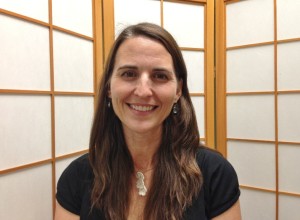USJBF selects JET alum Laurel Lukaszewski for new “Strengthening the JETAA USA Network” initiative
Remember the job listing for the Part-time Project Director with the US-Japan Bridging Foundation (USJBF) to support JETAA USA growth? The USJBF has announced that it has selected Laurel Lukaszewski (ALT Kagoshima-ken, 1990-92) for the position for its new initiative “Strengthening the JETAA Network and Connecting Next Generation Leaders.”
Shojiki ni itte, it’s hard to imagine anyone better suited for the role. Laurel has maintained a strong connection with Japan and the Japan-US community since here time on the JET Program by previously serving on the Board of Directors for the National Association of Japan-America Societies (NAJAS), as the Executive Director for the Japan-America Society of Washington, D.C, and as a Program Director of the Japan-America Society in Seattle. She currently lives in Washington, D.C. where she actively participates on the Board of the National Cherry Blossom Festival and JETAADC. You can see her in this panel discussion with fellow JET alums Jim Gannon (Ehime-ken, 1992-94) and Anthony Bianchi (Aichi-ken, Inuyama-shi, 1988-89) from the 2011 JETAA National Conference in D.C.
Laurel (who is also a sculptor–see her work here) officially started working Tuesday, July 9. Here is the official announcement from the USJBF:
July 11, 2013
The U.S.-Japan Bridging Foundation (USJBF), is pleased to announce that Laurel Lukaszewski has been hired as Project Director for its new initiative “Strengthening the JETAA Network and Connecting Next Generation Leaders.” Funded by the Japan Foundation Center for Global Partnership (CGP), the purpose of the project is to build infrastructure in support of the Japan-Exchange and Teaching Program Alumni Association, United States of America (JETAA USA) and enhance its impact promoting U.S.-Japan relations.
Laurel is an alumna of the JET Programme (Kagoshima-ken, 1990-1992) and has a solid understanding of U.S.-Japan relations, the U.S.-Japan community and how nonprofit and membership organizations are governed and run. After completing the JET Programme and receiving an M.A. in Asian Studies, Laurel embarked on a nine-year career with the Japan-America Societies in Seattle and Washington, D.C.. In 2005, Laurel left her position as ED of the JASW to pursue a career as an artist. She has maintained her ties to the JET Programme and U.S.-Japan community by serving as an active member of the JET Application Review and Interview committees for over thirteen years. Laurel served on the Board of Directors of the National Association of Japan America Societies (NAJAS), and has been on the National Cherry Blossom Festival Board of Directors since 2002. Paige Cottingham-Streater, Executive Director of the U.S.-Japan Bridging Foundation said, “Laurel is a valuable addition to our team and will bring a unique understanding about the JET community and its potential to promote a strong U.S.-Japan relationship.”
The U.S.-Japan Bridging Foundation, a 501(c)(3) nonprofit organization, awards scholarships to U.S. undergraduate students to study for one semester or academic year in Japan. The Foundation grows global leaders to help prepare America’s young people to assume future leadership roles in business, education, international and public affairs and other professions.
URL: http://www.bridgingfoundation.org/news/new-project-director-to-facilitate-jetaa-capacity-building
News agency Kyodo News has recently been publishing monthly articles written by JET alumni who were appointed in rural areas of Japan, as part of promotion for the JET Programme. Below is the English version of the column from June 2013. Posted by Celine Castex (Chiba-ken, 2006-11), currently programme coordinator at CLAIR Tokyo.
*******

“The four years I spent in Japan were some of the most significant years of my life; years I would not trade for anything in this world.”
Nadya Dee (Kagoshima-ken, Hioki-shi, 2007-11) is a writer, editor and blogger born and raised in the city of Kingston, Jamaica. With a Bachelors degree in English Literature from The University of the West Indies, she joined the JET Programme in 2007 and spent four years living and teaching English in Kagoshima, Japan. She currently works as an independent copywriter and her professional website can be found at http://nadyadee.wordpress.com. As a writer, she intends to write books and collections of short stories which explore the evolution of human consciousness. Through her international experiences she hopes to create written works that speak to the heart and soul of all mankind.
Ichi go Ichi e 一期一会: A Once in a Lifetime Opportunity
Before going to Japan in 2007, I knew nothing about Kyushu let alone Kagoshima. I searched the internet but could only find a little information about the place that I was going to live for a year. I learnt about the active volcano Sakurajima and the “Last True Samurai” Saigo Takamori but I never expected to have such an amazing experience and I never thought that, half way across the world, I would find my second home.
I joined the JET Programme to broaden my international experience with the intention of spending just one year. I left my homeland, Jamaica, and went to Japan as an Assistant Language Teacher to teach English as an alternate form of communication. I went as an ambassador, to increase global awareness and foster a positive relationship between Japan and Jamaica; two countries so far apart but with such similarities. While living in the town of Ijuin, in a city called Hioki on the Satsuma Peninsula in Kagoshima Prefecture, I taught Bob Marley songs, learnt Kagoshima-ben, played taiko, danced in a mud festival, wrote haiku and made great friends who I now consider a part of my extended family.
As a Prefectural ALT I taught at a technical high school, an agricultural high school, a special needs school and two different high schools in and around Hioki and Ichiki-Kushikino City. My responsibilities included lesson planning, team-teaching in Oral Communication classes, motivating students to practice English, editing essays and compositions, helping students to prepare for skit and speech competitions, providing pronunciation and interview preparation support as well as promoting international awareness within Japanese society. I always ensured that all my students learnt about Jamaican food, music and culture in my self-introduction classes.
After a year of adjusting to life in Japan I got the rare opportunity to perform taiko with the ‘Fukiage Seishou Daiko Group’ in four festivals throughout the rural area of Hioki City. In the following years I went on to teach reggae dances to my Japanese friends and we also performed in various shows and matsuri in and around Kagoshima City. Read More
Posted by Celine Castex (Chiba-ken, 2006-11), currently programme coordinator at CLAIR Tokyo.
The Public Relations Office of the Government of Japan published an article on the JET Programme in their monthly publication that aims to 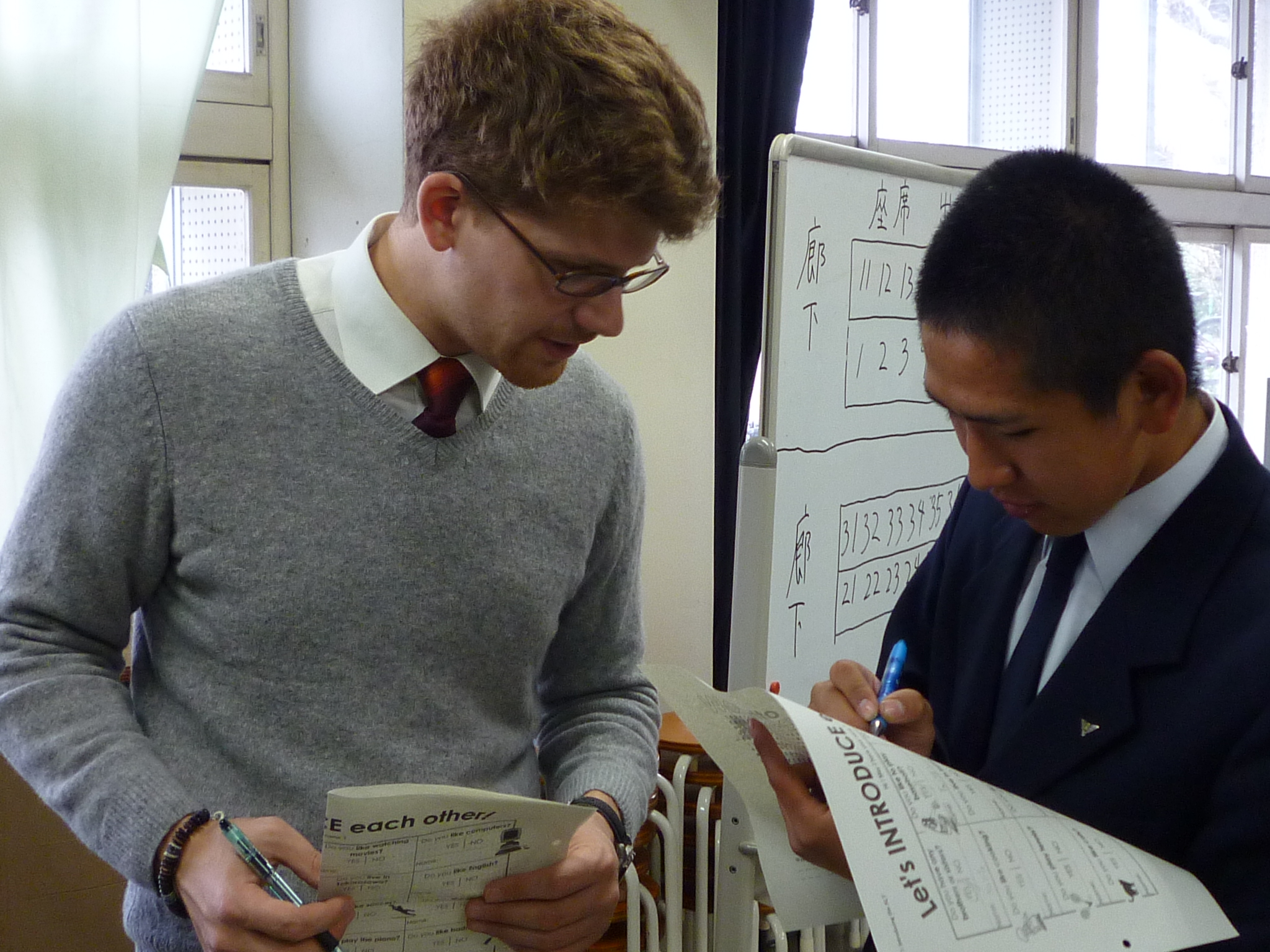 promote a better understanding of Japan in the world. They interviewed Bryan Darr (Saitama-ken, Tokorozawa-shi, 2008-13), current JET participant in Tokorozawa Shogyo High School in Saitama Prefecture. Bryan’s contributions to the JET community include being the Education and Professional Development Coordinator for National AJET in 2011-12, a regular speaker at Saitama Skill Development Conferences and an active member of Peer Support Group (PSG), a listening and referral service administered by AJET.
promote a better understanding of Japan in the world. They interviewed Bryan Darr (Saitama-ken, Tokorozawa-shi, 2008-13), current JET participant in Tokorozawa Shogyo High School in Saitama Prefecture. Bryan’s contributions to the JET community include being the Education and Professional Development Coordinator for National AJET in 2011-12, a regular speaker at Saitama Skill Development Conferences and an active member of Peer Support Group (PSG), a listening and referral service administered by AJET.
Click here to see the article “Young Pioneers of the JET Age.”
UK JET alum a finalist for Pearson National Teaching award
 Via the JETAA UK website:
Via the JETAA UK website:
An ex-JET, Crispin Chambers (Hyogo-ken, Awaji-shima), who now teaches Japanese at Tavistock College in Devon has won a teaching award for the South West of England. He is now a finalist for the Pearson National Teaching awards 2013. This is the first time a teacher of Japanese, and an ex-JET has been nominated, and JETAA would like to extend our warmest congratulations!!
Crispin was originally a JET on Awaji Island for 2 years and then became JET programme co-ordinator for a year at CLAIR in Tokyo. After returning to the UK, Crispin gained an MA in Japanese at Sheffield University followed by a PGCE at Nottingham University. He has been teaching Japanese and French at Tavistock since 1996, and has trained several other teachers of Japanese. His lessons are inspiring and fun, and were described by the Teaching Awards judges as “a joy to watch”. You can see his entry and leave him a message here:
You can learn more about Crispin’s fantastic Japanese lessons on a case study of the school written by the Japan Foundation in 2011. Click here orhere to read it.
There are currently two former Tavistock College students on the JET Programme in Saga and Sendai, so Crispin has gone on to inspire the next generation of JETs.
Former AJET Chair Announced as Senior Staff of Osaka Prefectural BoE’s New English Education Reform Team
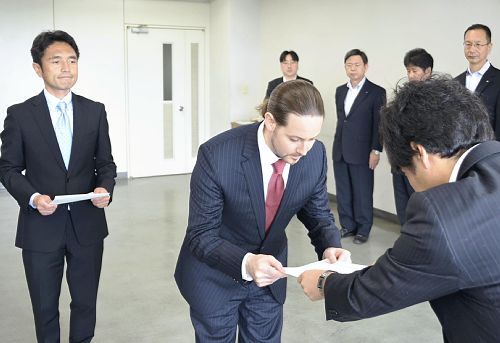
Former AJET Chair Matt Cook (Osaka-fu, 2007-12) receives his appointment to the Education Reform Team for Osaka Prefecture’s Board of Education.
Former AJET Chair Matthew Cook (Osaka-fu, 2007-12) has been announced as “Shusa” (“Senior Staff”) at the Osaka Prefectural Board of Education. His role will be working with all levels of English Educational Affairs and working as a member of the new English Education Reform Team.
Matt may be the first ever non-Japanese person to hold a senior level full-time position at a Board of Education in Japan*. (If anyone is aware of other examples, please post in the comment section.) Among other things, it is also encouraging to see a JET alum with an opportunity to play a substantive role in English education reform in Japan.
Matt has spent the past ten months working for the Osaka Prefectural Board of Education as a the Program Coordinator for their Native English Teacher (NET) Program (somewhat akin to being a JET Program Coordinator at CLAIR) following his completion of five years as a JET ALT in Osaka-fu and serving one year as AJET’s national council Chair.
Omedetou, Matt-san! Ganbatte kudasai and yoroshiku onegaishimasu!
Here’s a link to the article about the announcement in the Yomiuri Shimbun (Japanese only): http://www.yomiuri.co.jp/kyoiku/news/20130522-OYT8T00381.htm (If anyone readers could provide a short summary in the comment section, by the way, that would be greatly appreciated.)
*Note: I learned there have been other former JETs and other non-Japanese who worked as advisors and in other roles for the Osaka Prefectural Board of Education. However, my understanding is that none of them worked at the policy-making level. Here’s a 2003 article from The Guardian that quotes one in particular who seemed to have some good insights into reform and Japanese language education, Huw Olphant: http://www.guardian.co.uk/education/2003/jan/30/tefl Huw currently works as Head of Society and English Education for the British Council in Japan and was apparently mentioned in Importing Diversity, a book about the JET Programme published in 2000.
*********
Update 06.01.13
*********
Thanks to current JET Kevin McCoy for summarizing some of the above Daily Yomiuri article:
このうち、元滋賀県立高英語教諭でハーバード大教育大学院で教育修士号を得た武田浄さん(46)と、府内で外国語指導助手などを約6年間務めた米国籍のマシュー・クックさん(34)の2人を、この日、任期付き職員として採用した。他の5人は、英語に堪能な府教委職員で、従来の担当と兼務する。
Two the seven team members, Takeda Kiyoshi (46), a former English teacher at Shiga Prefectural High School, who received his Master’s degree at Harvard University Graduate School, and Matthew Cook (34), an American who worked for approximately 6 years as an ALT for the prefecture, were hired as “shokuin” (staff) with a limited period of appointment. The other 5 members are all staff at the prefecture’s Board of Education with exceptional English skills who will also serve their usual “tanto” (staff) positions.
Kevin also found the following report which is a little more specific with regard to titles:
http://www.nnn.co.jp/dainichi/news/130521/20130521032.html
同チームは7人で構成。これまで英語教育に携わってきた職員に加え、ハーバード大教育大学院で教育修士号を取得し、国内の公立中高で教諭経験がある武田浄さん(46)と、バージニア工科大卒で府教委の外国人英語指導員などに就いてきた米国国籍のマシュー・クックさん(34)を、それぞれ参事と主査で任期付き採用した。武田さんの任期は2016年3月末までで、クックさんの任期は2015年3月末まで。
The team is made up of 7 members. In addition to staff who have been involved in English education until now, Kiyoshi Takeda (46) […] and American national […] Matthew Cook (34) were each hired as “sanji” and “shusa”, respectively. Takeda’s appointment is until the end of March 2016, and Cook’s appointment will last until the end of March 2015.
Saitama JET interviewed on CBS News feature on Japanese school lunches
Update 5/28/13: I originally listed Karl as a Gumma JET before learning that he’s actually based in Saitama-ken. Apologies for the error.
CBS News did a feature on Japanese school lunches this past Saturday morning, May 18. They happened to pick a Higashi Chichibu Junior High School in Saitama-ken where JET Karl Hoeschen works and they ended up interviewing him for the story.
Click the link below to see the video. (The features starts around 07:54:30, after the opening segment on Michelle Obama.)
Here’s another link to the video that also has a written article in connection with the video: http://www.cbsnews.com/8301-33816_162-57585156/whats-for-lunch-in-japanese-schools-its-always-healthy/
Kyodo News “Rural JET alumni” series: Darryl Wharton-Rigby (Fukushima)
News agency Kyodo News has recently been publishing monthly articles written by JET alumni who were appointed in rural areas of Japan, as part of promotion for the JET Programme. Below is the English version of the column from April 2013. Posted by Celine Castex (Chiba-ken, 2006-11), currently programme coordinator at CLAIR Tokyo.
***********
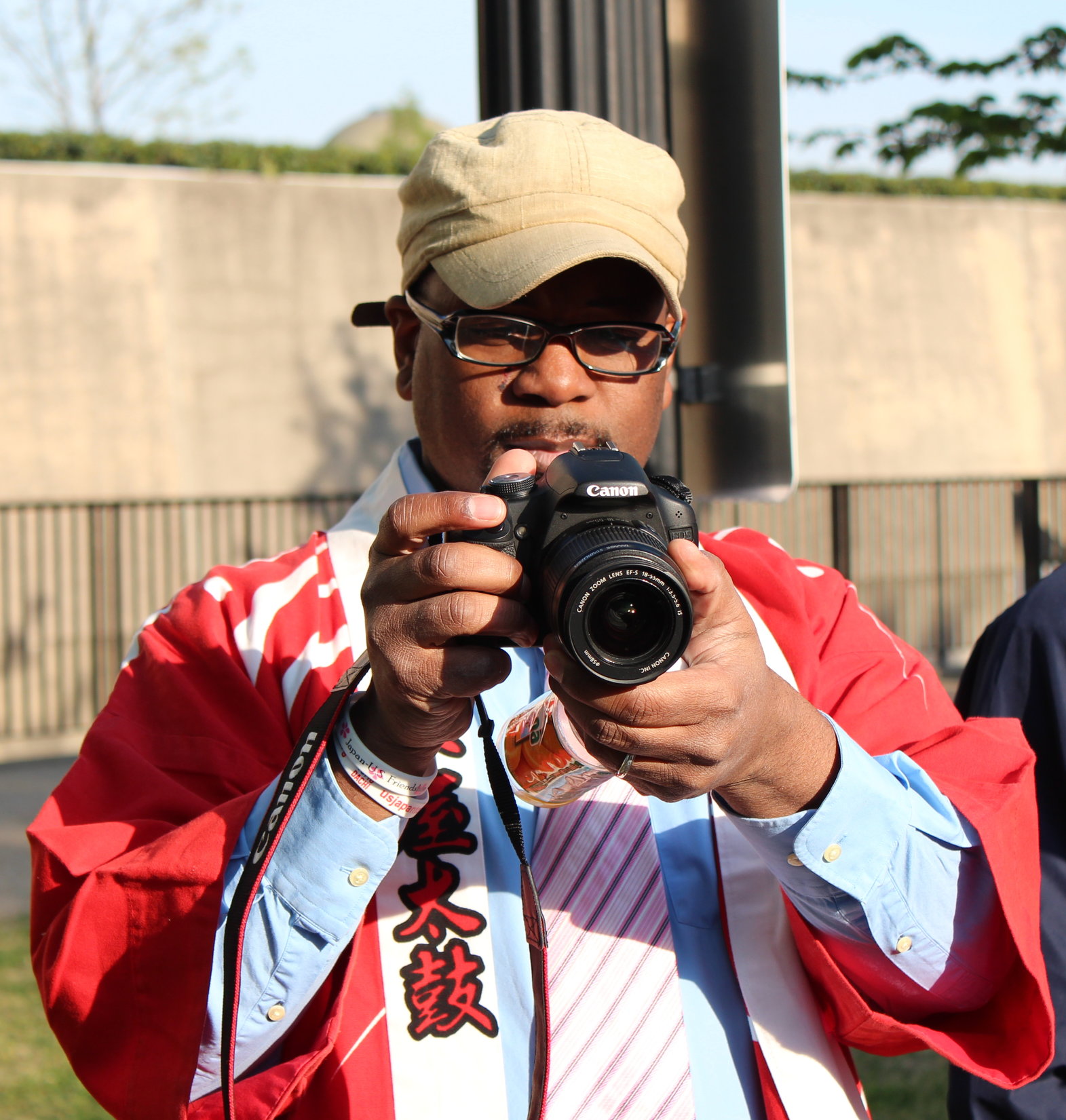
“I do not know how much of an impact I will have on the people I have met while I have been in Japan but I do know they have had a great impact on mine. Had I not applied for the JET Programme, I do not know what my life would be today.”
Writer, director, and professor, Darryl Wharton-Rigby (Fukushima-ken, Kawamata-machi, 2005-07) hails from a family of poets and storytellers in Baltimore, Maryland. He has earned a BA in History from Ithaca College and a MFA in Film Directing from Chapman University. After being hired by MTV Films to write a screenplay based on the Japanese manga TokyoTribe 2, he moved to Japan and taught English in a small town in Fukushima. He shot his latest short film, Obon, in the town of Natori, which is one of the areas of Japan hardest hit by the earthquake and tsunami. He is now working on a documentary, Don Doko Don: The Yamakiya Taiko Club Story, about a group of young drummers who were displaced due to high levels of radiation in their community from the failed nuclear plant. He has earned awards and grants from the Urbanworld Film Festival, the Maryland State Arts Council, The Painted Bride Arts Center, the Black Filmmakers Hall of Fame, and the Caucus Foundation for his work. He splits his time between Baltimore, Los Angeles and Japan where he currently lives, and credits his wife and three children as his ultimate muse.
A lifetime of happiness
One of the most satisfying and rewarding jobs in my life was working as an ALT in Kawamata in Fukushima Prefecture, Japan from 2005–2007. I have learned over the years that everything happens for a reason and that sometimes in life we are chosen to be at a certain place at a certain time.
I was 37 years old and living in Los Angeles, CA. I was living the life of a struggling filmmaker and needed a change, a break, from my career in film, television, and theatre. Since my first trip to Tokyo on a business trip for MTV I had been longing to return to Japan, because I knew there was more for me to learn and know about Japan. Applying for the JET Programme seemed the perfect opportunity.
From the moment I got accepted, life has moved at a rapid pace. I was placed in Kawamata, in Fukushima Prefecture, a quiet town with rice fields and rivers surrounded by mountains. My life in Kawamata was an adventure every day. I worked in two junior high schools, several elementary schools and kindergartens. It always brought a smile to my face, when I would hear students call my name, “Dariru-sensei!” I did my best to help the Japanese teachers in the classroom with activities and games. I got to know many of the students and could tell the ones who were enthusiastic towards learning English. Read More
Kyodo News “Rural JET alumni” series: Khalid Birdsong (Osaka)
News agency Kyodo News has recently been publishing monthly articles written by JET alumni who were appointed in rural areas of Japan, as part of promotion for the JET Programme. Below is the English version of the column from January 2013. Posted by Celine Castex (Chiba-ken, 2006-11), currently programme coordinator at CLAIR Tokyo.
***********
Khalid Birdsong (Osaka-fu, 2003-05) attended Howard University, in Washington D.C. from 1993-1997. He graduated with a Bachelor’s Degree in Graphic Design. He is currently an Art teacher at a private school in Palo Alto, CA for grades Kindergarten through 4th. He is also a freelance cartoonist and webcomic artist. His comic about living in Japan can be found at www.friedchickenandsushi.com .
I couldn’t speak their language!
I moved to Japan in the summer of 2003 to work as an Assistant Language Teacher (ALT) in Junior High School for the JET Programme. I was placed in a small town called Shimamoto near the mountains in-between the cities of Osaka and Kyoto. I ended up living there for two years. Two years full of wonderful experiences and pleasant surprises. As an African-American man from Atlanta, Georgia, living in Japan also had its challenges! One of the most difficult was learning the Japanese language.
Washington Post: JET teacher under fire from right-wing for lessons on Japan’s history of discrimination
This Washington Post article about Okinawa JET Miki Dezaki (“American teacher in Japan under fire for lessons on Japan’s history of discrimination“) describes how a lesson he taught his students about discrimination that was appreciated by his students and his school has turned into a major controversy and drawn attacks from a right-wing Japanese group called netouyo after Miki posted a video of his lesson online to share with others.
Miki was also the creator of the “Shit Japanese Students Say” video that was posted to JETwit last year along with a JQ interview with him. However, we removed those posts from JETwit last week upon his request as the controversy grew into something much larger than he could have imagined. According to The Japan Daily Press (“American teacher faces controversy, harassment over video teaching Japanese racism“), Dezaki also “gained a modest following over past videos he’s posted like ‘Hitchhiking Okinawa’, ‘What Americans Think of Japan’, and an in-depth look at what it’s like being gay in Japan.”
Here’s the video Miki made about racism which he’s modified slightly to address the criticisms of him:
Kyodo News “Rural JET alumni” series: Marion Lagan (Okayama)
News agency Kyodo News has recently been publishing monthly articles written by JET alumni who were appointed in rural areas of Japan, as part of promotion for the JET Programme. Below is the English version of the column from January 2013. Posted by Celine Castex (Chiba-ken, 2006-11), currently programme coordinator at CLAIR Tokyo.
***********

I hope I will have another chance to spend time there so, to the question “How is it to live in Tokyo?” I can finally answer “It’s good, but not as good as it was living in Okayama.”
Marion Lagan (Okayama-ken, Soja-shi, 2007-09) was born in the Southwest of France, then lived in many different places throughout France until she graduated high school. She moved to Paris where she studied French literature and Japanese. Once she got her teaching certificate, she applied to the JET Programme in order to get a first experience working abroad as well as furthering her knowledge of Japan and its culture. She spent two years in Okayama Prefecture teaching French and English and eating peaches. Once back in France, she got an MBA from HEC Paris. She is now working for L’Oréal as brand manager. In her spare time, she likes watching movies, making movies, reading novels as well as essays and planning her next trip to Japan.
All roads lead to Japan
When people learn I’ve spent two years in Japan, their first question always is “So, how is it to live in Tokyo ?” and the reaction I get when I tell them I don’t know since I lived in Okayama is, at best “What, you mean Hiroshima ?” or at worst “Is that even in Japan ?”. Yes, Okayama is in Japan. To me it is Japan.
From 2007 to 2009, I taught French and English to high school students whose age ranged from 15 to 19 year-old. I was a teacher in France and JET was a great opportunity to experience another lifestyle as well as work-style. I saw –and helped, I hope, students grow up and they definitely made me grow up too. It has been three years now I have left Japan and the more important memories seems to have sharpened so I will recount the ones that impressed me the most. Read More
JET alum Japanese teacher’s class visited by Delaware governor
Thanks to Virginia Murray for catching this article and posting it to the JETAA Southeast Facebook group. It seems that Linnea Bradshaw, a fellow JET of Virginia’s from 1988, is a Japanese teacher at a high school in Delaware whose class was recently visited by Delaware’s Governor Jack Markell. Go JET!
Markell shares travel experiences with Appoquinimink students
Delaware’s Governor visited the Level II language class at Appoquinimink High School Tuesday morning to share his experiences in Japan and to take questions from the class he video-chatted with from the foreign country during his trip last year.
Here are some excerpts from the article:
“Governor Jack Markell told students in Linnea Bradshaw’s Japanese class Tuesday that speaking multiple languages gives them a leg-up in the job market. Delaware’s Governor visited the Level II language class at Appoquinimink High School Tuesday morning to share his experiences in Japan and to take questions from the class he video-chatted with from the foreign country during his trip last year.”
………
“Markell wasn’t the only one in the room Tuesday who has experienced Japan. Last summer, Bradshaw took 23 students from both Middletown and Appoquinimink High Schools to Japan to immerse them in the culture. Bradshaw said that her highest-level students can speak sentences, and understand, write and read Japanese.”
…….
“During his multi-city trip of the country, Markell, his wife, and staff, met with several businesses in the Miyagi area in hopes of building a stronger partnership between Delaware and Miyagi.”
Click here to read the full article on the Middletown Transcript’s website as well as see a photo of Linnea with the Governor: http://www.middletowntranscript.com/article/20130108/NEWS/130109810/0/SEARCH
Kyodo News “Rural JET alumni” series: Rashaad Jorden (Yamagata)
News agency Kyodo News has recently been publishing monthly articles written by JET alumni who were appointed in rural areas of Japan, as part of promotion for the JET Programme. Below is the English version of the column from December 2012. Posted by Celine Castex (Chiba-ken, 2006-11), currently programme coordinator at CLAIR Tokyo.
***********
Born in Japan, Rashaad Jorden (Yamagata-ken, Tsuruoka-shi, 2008-10) has lived a bit of a nomadic life, having lived in Virginia, New Jersey, and several times in France and Japan. He attended Coppin State University (Baltimore, Maryland) and graduated with a degree in English. He came back to Japan on the JET Programme and worked for two years in Yamagata Prefecture, in Haguro, a village that merged into Tsuruoka. Currently, he conducts English classes for Japanese adults at an online eikaiwa school named Hello English and is in the job hunt.
Same Country, New Experiences
I was born on a naval base in Yokosuka, where I spent my first 18 months. After graduating from university, I spent a year working at an eikaiwa school in Yokohama.
However, Japan was pretty much a mystery to me. My co-workers were all Westerners, so I was obviously missing out on a true Japanese work environment. If I went somewhere other than Shibuya on an off day, it was a miracle. And despite taking Japanese classes every Wednesday morning for several months, I struggled mightily in the language.
Needless to say, I had not gotten the most out of Japan during my year in Yokohama. But there was definitely an itch to discover more of the country and its culture. So after working as an assistant English teacher in France, the decision was simple: I was applying for the JET Programme.
In late March 2008, I learned Read More
Kyodo News “Rural JET alumni” series: Charlotte Green (Hokkaidō)
News agency Kyodo News has recently been publishing monthly articles written by JET alumni who were appointed in rural areas of Japan, as part of promotion for the JET Programme. Below is the English version of the column from November 2012. Posted by Celine Castex (Chiba, 2006-11), currently programme coordinator at CLAIR Tokyo.
***********
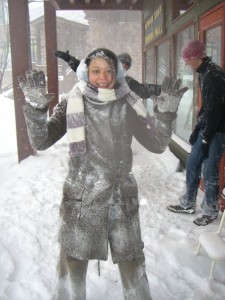
“The subtlest things we observe in children are often the most significant. Of all the lessons I learned from JET, this is perhaps the one I have carried with me the furthest.”
Charlotte Green (Hokkaidō, Biei-chō, 2006-08), is from St. Helens, Merseyside, in the U.K. After studying abroad in Tokyo for one year, she graduated from university with a degree in Japanese and Politics in 2006. The same year, she came back to Japan on the JET Programme and spent two years in the lovely town of Biei. Now back in England, Charlotte is currently studying for a post-graduate diploma in Psychoanalytic Observational Studies and working as a play worker with Barnardo’s.
Looking Back with Letters
In a childishly-decorated shoe box at the back of my wardrobe is a collection of items I keep from interesting times in my life. A lot of it was generated from my time as an Assistant Language Teacher (ALT) on the JET programme. I spent two years teaching in Biei, a rural town in Hokkaido with a population of 12,000 people. Like most other ALTs, I arrived with only an anachronistic picture of the place in my mind. I worked at three different junior high schools, the smallest of which had twelve students and lay amidst rice paddies frequented by storks and warblers, and hills of birch trees that, in the autumn, turned a spectacular yellow. Snow fell thick and fast for six months of the year. The landscape was a constant source of intrigue. I can remember walking home from work one afternoon and hearing Read More
JET alum Asia Security Expert Michael Auslin in the Wall Street Journal
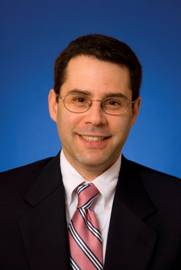 Here’s a recent article in the Wall Street Journal by JET alum Michael Auslin, Director of Japan Studies at the American Enterprise Institute:
Here’s a recent article in the Wall Street Journal by JET alum Michael Auslin, Director of Japan Studies at the American Enterprise Institute:
Michael Auslin: Asian Pivot, Take Two
President Barack Obama is celebrating his re-election by trying to make good on his promised pivot to Asia. Not only is the President in the region for the East Asian Summit in Cambodia—he has also dispatched his Secretaries of State and Defense on extended visits as well.
Showing up may constitute 90% of diplomacy. But at a time of numerous territorial disputes and leadership upheavals, Mr. Obama may have bitten off more than he can chew over the next four years.
The Administration’s agenda this month is an unusual start. Unlike traditional trips that include old allies like Japan or …
Click here to read the article (subscription required).
“Privy to Mysterious Loos” by New Zealand JET Tania Butterfield
A recent blog article by current JET Tania Butterfield that recently appeared in New Zealand publication Marlborough Express. (Thanks to Jessica Tisch for posting on the JETAA South Island Facebook group):
Last weekend I discovered something I should have known since I arrived here – toilets are not my friend.
If you know anything about Japan, you know it has some unusual toilets.
No, I am not referring to the squat toilets, which I quite happily use at school.
I am referring to the insanely automated toilets with a billion buttons that do everything under the sun so you never have to touch that part of your body again.
Some of the buttons make sense – like the button to ….
Click here to read the full article.

